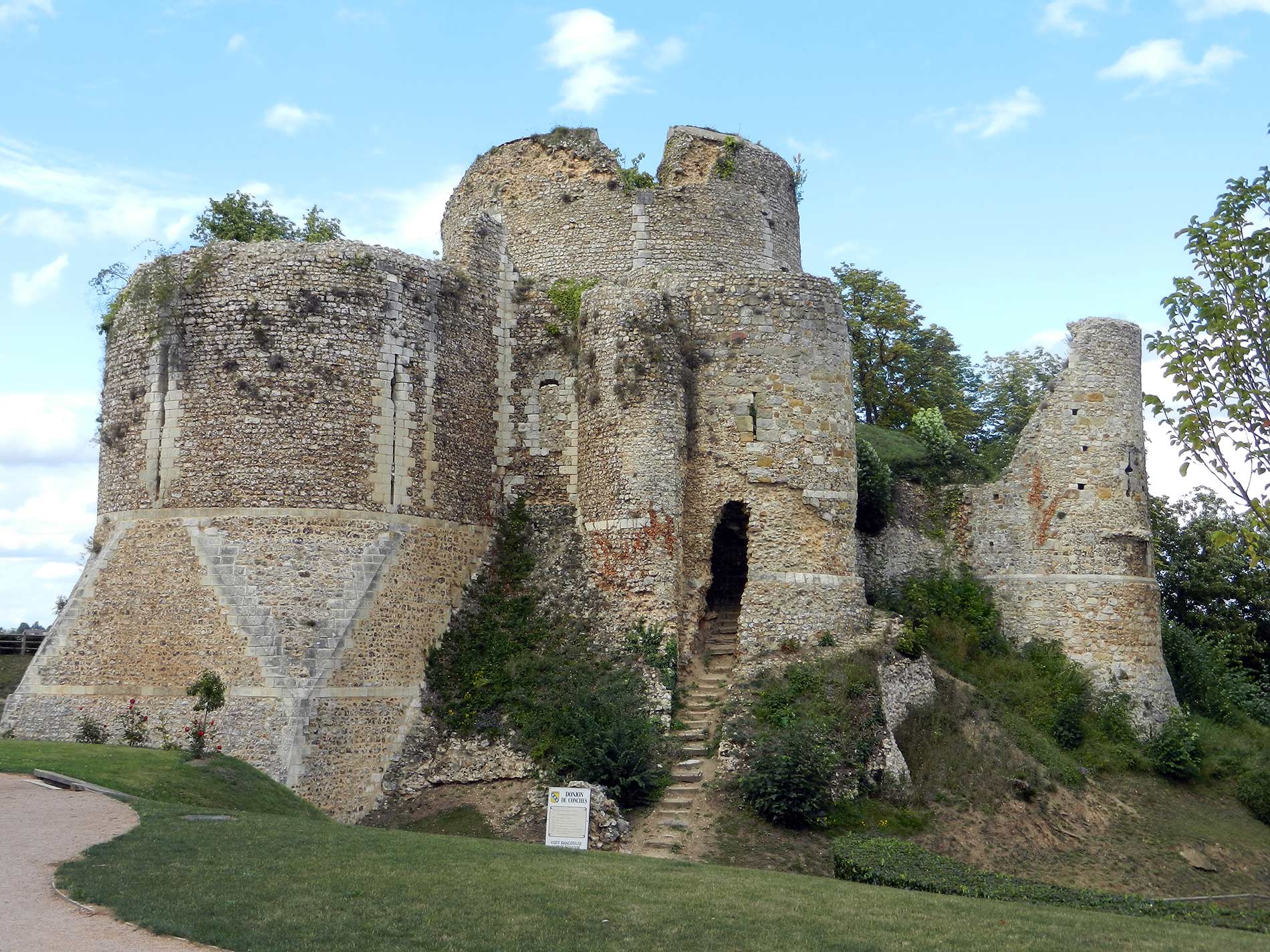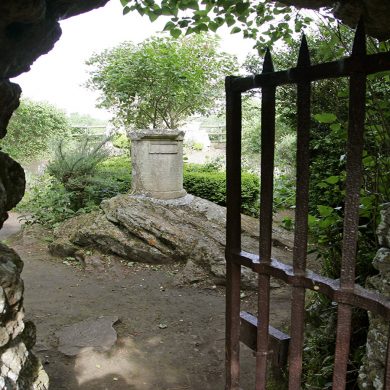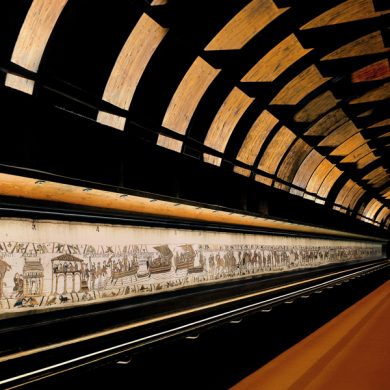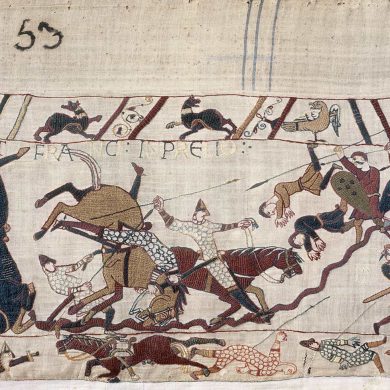Updated on 1 April 2021
Reading time: 5 minutes
The rich medieval history of Normandy has left a huge legacy of castles big and small, in ruin or restored, across the land. Many can be visited quite freely, leaving you to imagine the cry of battle and the clash of swords!
Defending the Duchy
Just thirty years or so after the signing of the famous treaty of Saint-Clair-sur-Epte, which fixed the first frontiers of the future Duchy in the very memorable year of 911, the castle of Ivry-la-Bataille was built straddling the route of the Roman road. William Longsword, Rollo’s son, had this castle positioned strategically overlooking the river Eure at the far south-eastern frontier of the Duchy. The original castle would have appeared as little more than a wooden fort, with a square keep atop a motte or artificial hill, and a fenced in bailey or courtyard. By the XVth century it had become the imposing stone castle we see today, guarding the frontier of Normandy at this point.
Château d’Ivry-la-Bataille
1-3 rue de la Sence, 27540 Ivry-la-Bataille
Where five roads meet
The castle at Blainville had a similar history, beginning as a wooden fort, to become, as was the custom, an impregnable (hopefully) stone fortress by the 18th century. Five roads connected Rouen to the north and, aware of its key position dominating the Crevon river, William the Conqueror ‘persuaded’ Roger de Clères to cede this strategic castle without a fight. The reassertion of his power and personal authority in partnership with the church, the re-organisation and reform of the great Norman abbeys, and the building of castles were key to William’s assertive and centralising strategy. Forgotten and overgrown, the ruined castle was progressively restored from 1967 by the Archéo Jazz Association who organise international cultural events there every year.
Château de Blainville-Crevon
Route de Buchy, 76116 Blainville-Crevon
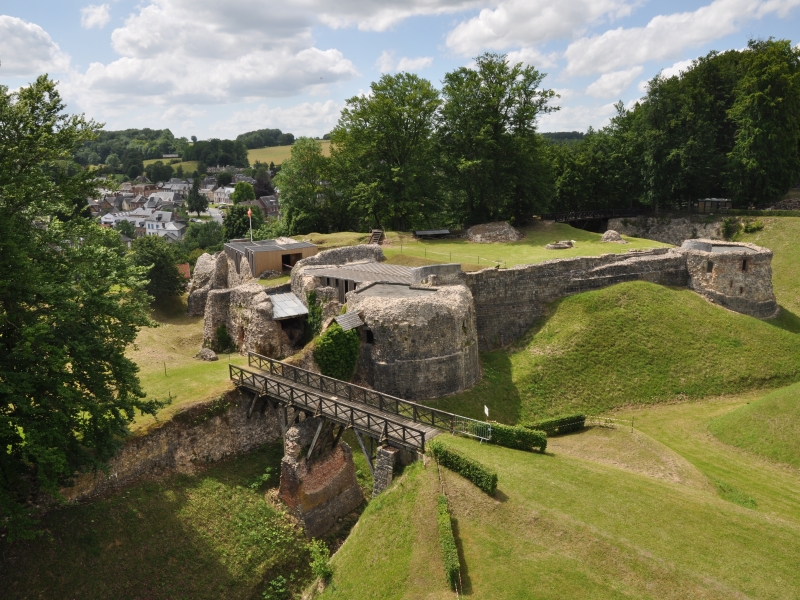
Masters of the Risle valley
Perched on its 120m-high rocky outcrop, the ruins of the castle of Monfort-sur-Risle overlook the tiny town in the valley of the Risle. You have an unrivalled view on the roads that led to Pont-Audemer, Brionne and Lieurey. The castle was built from the 16th to the 18th century, guarding one of the rare crossing points of the river. One of the lords of the castle, a certain Hugues II, was a companion in arms to the Duke, the future William the Conqueror, at the Battle of Hastings in 1066. One of his descendants, Sir Hugues V was present in the handing over of the huge ransom for Richard the Lionheart’s release from captivity, in 1195.
Château de Monfort-sur-Risle
7 rue Abbe Pelletier, 27290 Montfort-sur-Risle
The scene of many battles
A league and a half south of Dieppe Duke William’s uncle, Guillaume d’Arques, had the castle of Arques-la-Bataille built in the 1040s. It has a long history of conflict throughout the Hundred Years’ War, and in 1472 it withstood the torching of the town by Charles the Bold. In 1589 Henri IV managed to destroy the church porch with artillery – by mistake, while Louis XIV included it among the castles deemed ‘improper for use’ over a century later. In the 19th century Jules Reiset bought the castle and turned it into a museum.
Château d’Arques-la-Bataille
76880 Arques-la-Bataille
But who the devil was Robert the Devil?
On the heights of Moulineaux near Rouen, the castle of Robert the Devil (le Diable) hoves into view for anyone taking the A13 motorway that links Paris to the Norman coast. According to legend Robert was the son of Duke Aubert and his Duchess Indre. As she was barren she felt so peeved and alarmed at having a son she called him the devil – which might explain his later violent temperament. Like a bat from hell on horseback he terrorised the countryside with his band of brigands before popping off to Rome to apologise to the pope for his bad behaviour. Since 2009, it has been used as a centre to help train people back into the world of work.
Château de Robert le Diable
1061 rue Lieutenant Jacques Hergault, 76530 Moulineaux
Tying the knot
In Azier, overlooking a loop in the River Seine, just on the edge of the Brotonne forest and close to the Vernier marshes, you’ll find a magic place, a chapel dedicated to the English martyr and saint, Thomas à Becket, Archbishop of Canterbury. The story goes that if you tie a knot in a branch of a neighbouring tree and then make a wish, and if the knot resists the passage of time, then your heart’s desire will be realised (although you’ll have to wait). Hardly surprising then that it became a hotspot for lovers, they, little realising perhaps, that recent excavations, unique in France, tell us it was once a leper colony!
Chapelle Saint-Thomas
Bois de Fécamp, 27500 Aizier
